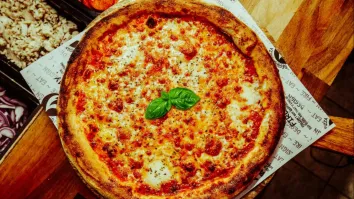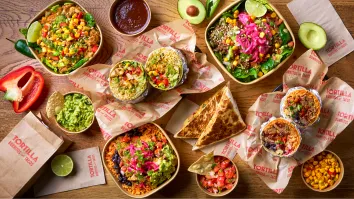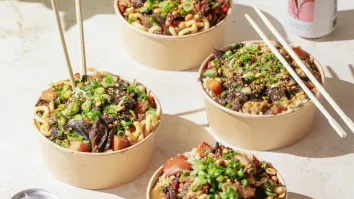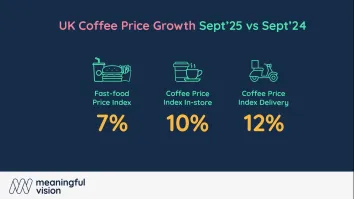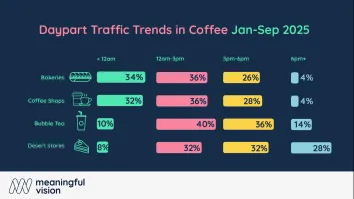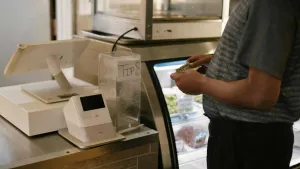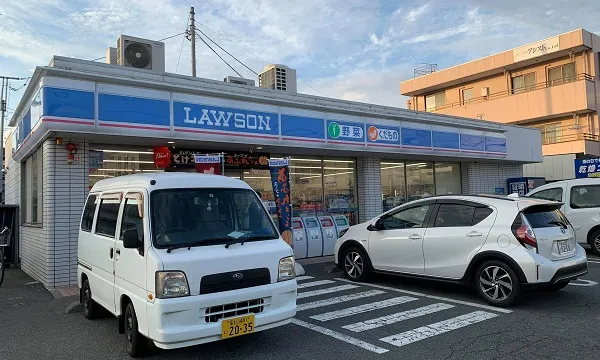
Restaurants in Japan need to take notes from the konbini playbook
The likes of 7-Eleven, Lawson and FamilyMart are enjoying success by challenging clear lines between foodservice and retail.
Convenience stores have been rewriting the food & beverage playbook in Japan, pushing the country’s restaurant sector to inevitably embrace digital as it fights off store closures, rising costs and consumers’ growing preference for food-to-go.
Their way of life itself provides an initial but insightful explanation of the Japanese market’s pivot towards convenience stores - colloquially referred to as konbinis. Consumers, especially the upper-working class, are becoming increasingly time-poor. One would be remiss to not acknowledge the country’s overworking culture, an institutionalised habit that has led to some tragic results.
This makes the daily need to visit a konbini seemingly ideal: they appear to be in almost every corner, have a ton of variety, and offer services that rival other sectors and reach more than one segment. Essentially, they are enjoying success by challenging clear lines between foodservice and retail.
‘We want it to function like their own fridge’
For example, Lawson, a top rival of FamilyMart and 7-Eleven, has almost 14,000 stores country-wide.
In an exclusive presentation by the convenience chain to industry professionals, an executive provided a clear and simple illustration of how they want their sites to be like: “We want it to function like their own fridge.”
Lawson recently partnered with Uber Eats, an aggregator that already has over 14,000 restaurant partners in Japan, furthering the notion of convenience even more. Currently, the partnership is being trialled in 13 company-operated stores.
Their specific goal? To capitalise on a niche but growing food-to-go/takeaway market: ordered food cooked outside but eaten inside or at home.
Apart from their namesake store that features its signature blue aesthetic, Lawson has a ‘Natural’ segment, consisting of stores with a healthier selection of products and the Lawson Store 100 budget segment, a joint venture between a product-supply subsidiary of the convenience store and 99 Plus Inc., which ran a chain of discount supermarkets.
The konbini chain’s trio of concepts offers a clear picture of accessibility and variety, a trait also present in their competitors.
Similar elements also include coffee arguably up to par with QSRs, a dedicated dining space and ATM machines - a feature both helpful to locals and gaikokujins (foreigners), with cash still a preferred method of payment in most locations and famed food spots due to a small amount of foreign currency exchange locations.
Various sources park the approximate number of konbinis in Japan at over 50,000.
Surge in virtual restaurants expected
The numbers make a clear case for restaurants in Japan to undergo digital transformation. Cited data by Uber Eats says 30% of physical restaurants that open in the country close in the first year; 70% close in their sophomore year and 90% close in the third.
Aside from numerous permits needed to operate, the country’s consumption tax hike from 8 to 10% enacted last year also covers restaurants, raising the level of difficulty for budding operators and restaurateurs even further.
But whilst some traditional fast food outlets treat digital as add-ons, some restaurants in Japan have a top-to-bottom experience, and are now operating primarily in the dark/virtual kitchen space.
Virtual kitchen operator Kitchen Base, for example, runs seven brands on various tech platforms from four physical kitchens. On average, opening a physical restaurant space costs JPY15 million (approx. US$138,000). Initial investment in their ongoing operations, however, can be opened with about 1/15 or 6.67% of that cost. Monthly payments, meanwhile, could be also reduced to a third.
Since these restaurants only provide takeaway, they are not affected by the consumption tax hike. Currently, there are more than 1,000 virtual restaurants in Japan, which run out of a mere 70 physical locations. Expansion is expected in this field, which could raise questions about site costs and ultimately, to extent of how will the participating restaurant concepts shoulder them.
Delivery as historical practice
Despite delivery being one of the restaurant sector’s main plays for convenience at the moment, the idea of delivery itself has been a familiar concept in Japan for centuries.
Thought to have originated as early as the mid-Edo period in the 1700s, demae (literally meaning “to go in front of”) has been immortalised by photos of delivery men stacking towers of soba noodle bowls and carrying them on a bike to various locations.
The modern picture, so it seems, is a typical bike rider with a bag flashing the logo of the platform they are working for (or with, depending where you stand on third-party aggregators’ positioning in the so-called gig economy), bringing either Japanese or American fast food at the touch of a button.
This shift is one of many signs pointing to restaurants in Japan needing to pursue multi-channel growth if they want to reap similar rewards being enjoyed by konbinis. Learning and taking notes from the latter’s playbook is a start, but success ultimately lies in being able to quickly adapt to rapidly-changing consumer behaviours.


